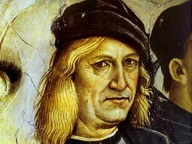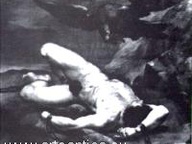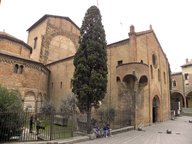Cy Twombly. Paradise
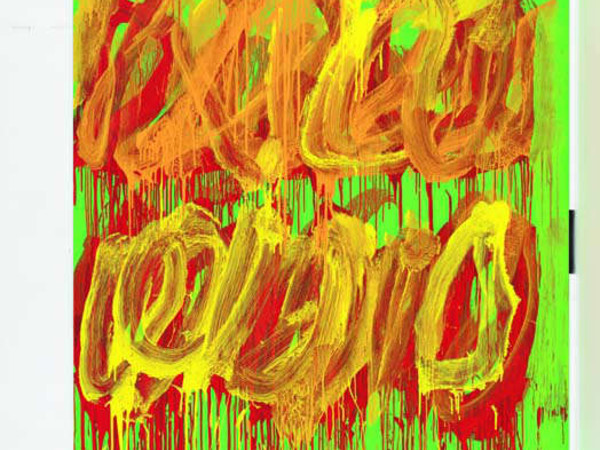
© Cy Twombly Foundation | Cy Twombly, “Untitled (Camino Real V)”, 2011. Acrilico su legno, 252,5 x 187,2 cm
From 06 Maggio 2015 to 13 Settembre 2015
Venice
Place: Ca’ Pesaro – Galleria Internazionale d’Arte Moderna
Address: Santa Croce 2076
Times: 10am-06pm; closed on Monday
Responsibles: Julie Sylvester, Philip Larratt-Smith
Ticket price: full € 10, reduced € 7.50, free entrance Venetian citizens and residents, children aged from 0 to 5 and other categories
Telefono per informazioni: +39 041 721127
E-Mail info: capesaro@fmcvenezia.it
Official site: http://capesaro.visitmuve.it
One of the greatest masters of contemporary art, Cy Twombly (Lexington, Virginia, 1928 – Rome, 2011) returns to Venice – where he was present at the Biennale no less than five times from 1964, the last being in 2001 when he won the Golden Lion – with a major monographic exhibition curated by Julie Sylvester and Philip Larratt-Smith.
The exhibition, organised in collaboration with the Cy Twombly Foundation of New York and with the scientific coordination of Gabriella Belli and exhibition layout by Daniela Ferretti, arrives at Ca’ Pesaro like a precious cameo: the unseen testimony of a work that is regenerated every time it appears – in an emotional continuum – and of an artist who never ceases to amaze “for the extraordinary visual intelligence and acute sensitivity to all forms of physical, natural and artistic beauty”, writes Philip Larratt-Smith in the catalogue (published by Damiani).
CY Twombly Paradise offers an initiatory journey through six decades of Twombly’s production as painter and sculptor and of his tireless creativity, and which in Venice: a new perspective of the mysteries and revelations of Twombly’s art. The work of Cy Twombly, who died in 2011, revolves around the universal themes of love, art, beauty and death, but the particularity of his artistic vision, his perspective of the world offers an extraordinarily original interpretation.
Like many of his generation, Twombly reacted against the dominant trend in painting of Abstract Expressionism, but unlike others, who opted for a Pop or Neo-dadaist vision, he established a synthesis between the legacies and established techniques of gestural abstraction and the tradition of European painting. The innovative use of language, the wide range of allusions and references open his work to history, literature and philosophy, blurring the boundaries between painting, drawing and writing, while at the same time preserving a high degree of abstraction.
His love for the vernacular is counterbalanced by a refinement and a deep cultural knowledge. Indeed, his work oscillates between opposing pairs: reason and passion, depiction and abstraction, Apollonian and Dionysian, sexuality and intellect, past and present, imagination and observation, clarity and frenzy.
Thus, exuberant sexuality, the reference to an Arcadian past during which body and mind were harmoniously unified, the use in the works of words, phrases, poems and, above all, the gestural abstraction of Twombly – who used to draw in the dark, painted also with his left hand, and increased the extension of the brush by fixing it to long sticks as a deliberate strategy to forget his artistic training and lose control of the technical tool – are just some of the themes of his creative research explored in the spaces of the monumental Ca’ Pesaro.
In the exhibition, the early wall painting on wood dated 1951 leads, via an itinerary full of visions and references, to a selection of Twombly’s last works, produced 2011, when the artist was at the physical limit of his old age: eight paintings of gestural baroque circles in yellow, red and orange on a bright green background (half margarita, half key lime); eccentric circular strokes – among the key motifs of the artist – narrow in some places and broader, freer in others, to generate “a sensation of radiant energy and controlled frenzy”.
“His hallmarks, intentionally painted, drawn and written cancelled out lines, coexist with occasional drops, sprays and smears allowed to spread over the surface, revealing the creative process.” Created a few weeks before his death, these polished and hypnotic surfaces – four of which are on display on this occasion – were the last paintings to be made by the American artist.
For Twombly art is the “earthly paradise”, where the experiences and emotions of the past are recovered and transfigured in the present. Love in all its manifestations – erotic, intellectual, platonic, romantic, love of culture, love of life – is the animating principle of his paintings, drawings and sculptures. His art is the mysterious, perfect union between dream and wakefulness, between irrecoverable past and a present perceptible through the senses, between intellectual ardour and a capacity to love: paradise regained.
The exhibition, organised in collaboration with the Cy Twombly Foundation of New York and with the scientific coordination of Gabriella Belli and exhibition layout by Daniela Ferretti, arrives at Ca’ Pesaro like a precious cameo: the unseen testimony of a work that is regenerated every time it appears – in an emotional continuum – and of an artist who never ceases to amaze “for the extraordinary visual intelligence and acute sensitivity to all forms of physical, natural and artistic beauty”, writes Philip Larratt-Smith in the catalogue (published by Damiani).
CY Twombly Paradise offers an initiatory journey through six decades of Twombly’s production as painter and sculptor and of his tireless creativity, and which in Venice: a new perspective of the mysteries and revelations of Twombly’s art. The work of Cy Twombly, who died in 2011, revolves around the universal themes of love, art, beauty and death, but the particularity of his artistic vision, his perspective of the world offers an extraordinarily original interpretation.
Like many of his generation, Twombly reacted against the dominant trend in painting of Abstract Expressionism, but unlike others, who opted for a Pop or Neo-dadaist vision, he established a synthesis between the legacies and established techniques of gestural abstraction and the tradition of European painting. The innovative use of language, the wide range of allusions and references open his work to history, literature and philosophy, blurring the boundaries between painting, drawing and writing, while at the same time preserving a high degree of abstraction.
His love for the vernacular is counterbalanced by a refinement and a deep cultural knowledge. Indeed, his work oscillates between opposing pairs: reason and passion, depiction and abstraction, Apollonian and Dionysian, sexuality and intellect, past and present, imagination and observation, clarity and frenzy.
Thus, exuberant sexuality, the reference to an Arcadian past during which body and mind were harmoniously unified, the use in the works of words, phrases, poems and, above all, the gestural abstraction of Twombly – who used to draw in the dark, painted also with his left hand, and increased the extension of the brush by fixing it to long sticks as a deliberate strategy to forget his artistic training and lose control of the technical tool – are just some of the themes of his creative research explored in the spaces of the monumental Ca’ Pesaro.
In the exhibition, the early wall painting on wood dated 1951 leads, via an itinerary full of visions and references, to a selection of Twombly’s last works, produced 2011, when the artist was at the physical limit of his old age: eight paintings of gestural baroque circles in yellow, red and orange on a bright green background (half margarita, half key lime); eccentric circular strokes – among the key motifs of the artist – narrow in some places and broader, freer in others, to generate “a sensation of radiant energy and controlled frenzy”.
“His hallmarks, intentionally painted, drawn and written cancelled out lines, coexist with occasional drops, sprays and smears allowed to spread over the surface, revealing the creative process.” Created a few weeks before his death, these polished and hypnotic surfaces – four of which are on display on this occasion – were the last paintings to be made by the American artist.
For Twombly art is the “earthly paradise”, where the experiences and emotions of the past are recovered and transfigured in the present. Love in all its manifestations – erotic, intellectual, platonic, romantic, love of culture, love of life – is the animating principle of his paintings, drawings and sculptures. His art is the mysterious, perfect union between dream and wakefulness, between irrecoverable past and a present perceptible through the senses, between intellectual ardour and a capacity to love: paradise regained.
SCARICA IL COMUNICATO IN PDF
COMMENTI

-
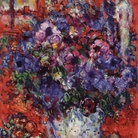 Dal 20 aprile 2024 al 27 ottobre 2024
Conversano | Castello Conti Acquaviva D'Aragona
Dal 20 aprile 2024 al 27 ottobre 2024
Conversano | Castello Conti Acquaviva D'Aragona
-
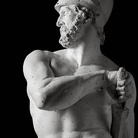 Dal 20 aprile 2024 al 29 settembre 2024
Possagno | Museo Gypsotheca Antonio Canova
Dal 20 aprile 2024 al 29 settembre 2024
Possagno | Museo Gypsotheca Antonio Canova
-
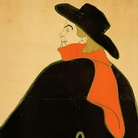 Dal 20 aprile 2024 al 21 luglio 2024
Torino | Mastio della Cittadella
Dal 20 aprile 2024 al 21 luglio 2024
Torino | Mastio della Cittadella
-
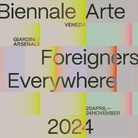 Dal 20 aprile 2024 al 24 novembre 2024
Venezia | Sedi varie
Dal 20 aprile 2024 al 24 novembre 2024
Venezia | Sedi varie
-
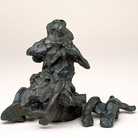 Dal 16 aprile 2024 al 15 settembre 2024
Venezia | Gallerie dell’Accademia
Dal 16 aprile 2024 al 15 settembre 2024
Venezia | Gallerie dell’Accademia
Willem de Kooning and Italy
-
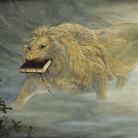 Dal 17 aprile 2024 al 22 settembre 2024
Venezia | Ateneo Veneto
Dal 17 aprile 2024 al 22 settembre 2024
Venezia | Ateneo Veneto

